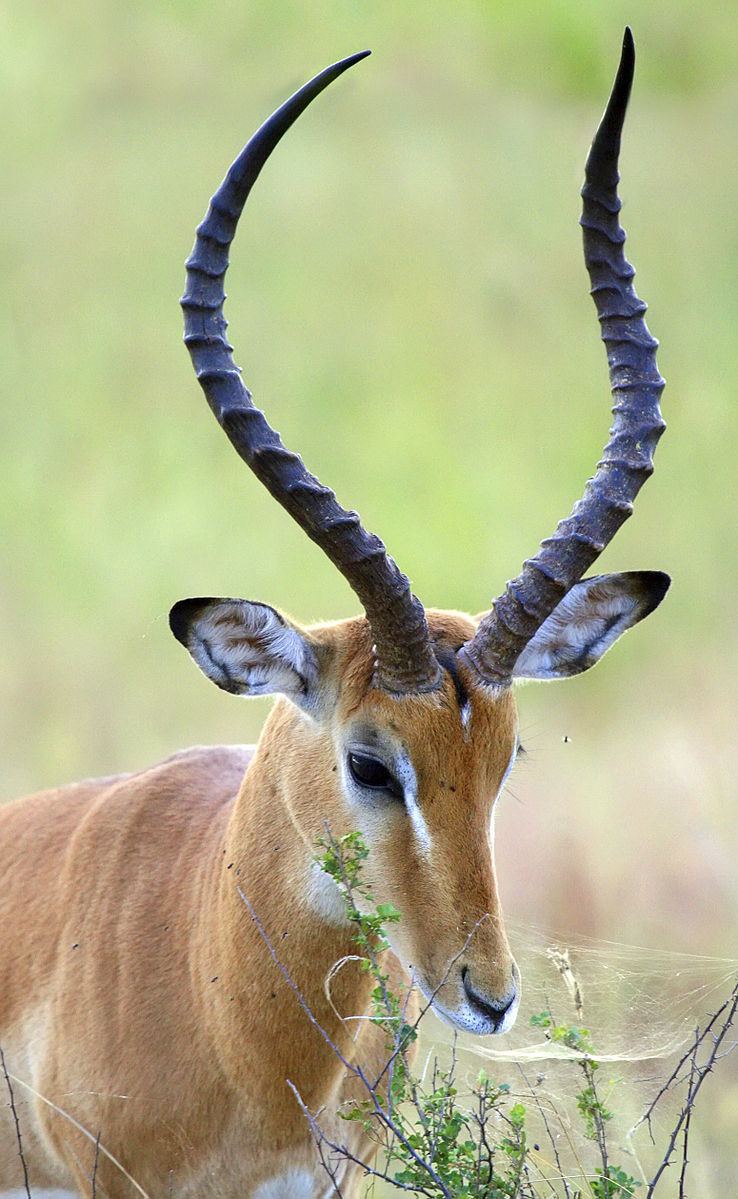 | ||
A horn is a permanent pointed projection on the head of various animals consisting of a covering of keratin and other proteins surrounding a core of live bone. Horns are distinct to antlers which are not permanent. In mammals, true horns are found mainly among the ruminant artiodactyls, in the families Antilocapridae (pronghorn) and Bovidae (cattle, goats, antelope etc.).
Contents
One pair of horns is usual; however, two or more pairs occur in a few wild species and domesticated breeds of sheep. Polycerate (multi-horned) sheep breeds include the Hebridean, Icelandic, Jacob, Manx Loaghtan, and the Navajo-Churro.
Horns usually have a curved or spiral shape, often with ridges or fluting. In many species only males have horns. Horns start to grow soon after birth, and continue to grow throughout the life of the animal (except in pronghorns, which shed the outer layer annually, but retain the bony core). Partial or deformed horns in livestock are called scurs. Similar growths on other parts of the body are not usually called horns, but spurs, claws or hoofs depending on the part of the body on which they occur.
Other hornlike growths
The term "horn" is also popularly applied to other hard and pointed features attached to the head of animals in various other families:
Many mammal species in various families have tusks, which often serve the same functions as horns, but are in fact oversize teeth. These include the Moschidae (Musk deer, which are ruminants), Suidae (Wild Boars), Proboscidea (Elephants), Monodontidae (Narwhals) and Odobenidae (Walruses). Polled animals or pollards are those of normally-horned (mainly domesticated) species whose horns have been removed, or which have not grown. In some cases such animals have small horny growths in the skin where their horns would be – these are known as scurs.
On humans
Cutaneous horns are the only examples of horns growing on people. They are most often benign growths and can be removed by a razor.
Cases of people growing horns have been historically described, sometimes with mythical status. Researchers have not however discovered photographic evidence of the phenomenon. There are human cadaveric specimens that show outgrowings, but these are instead classified as osteomas or other excrescences.
The phenomenon of humans with horns has been observed in countries lacking advanced medicine. There are living people, several in China, with cases of cutaneous horns, most common in the elderly.
Some people, notably The Enigma, have horn implants; that is, they have implanted silicone beneath the skin as a form of body modification.
The erect penis is sometimes referred to in slang use as a "horn", but it normally contains no keratin. However, a cutaneous horn can grow on the penis, which may indicate cancer.
Animal uses of horns
Animals have a variety of uses for horns and antlers, including defending themselves from predators and fighting members of their own species (horn fighting) for territory, dominance or mating priority. Horns are usually present only in males but in some species, females too may possess horns. It has been theorized by researchers that taller species living in the open are more visible from longer distances and more likely to benefit from horns to defend themselves against predators. Female bovids that are not hidden from predators due to their large size or open savannah like habitat are more likely to bear horns than small or camouflaged species.
In addition, horns may be used to root in the soil or strip bark from trees. In animal courtship many use horns in displays. For example, the male blue wildebeest reams the bark and branches of trees to impress the female and lure her into his territory. Some animals with true horns use them for cooling. The blood vessels in the bony core allow the horns to function as a radiator.
After the death of a horned animal the keratin may be consumed by the larvae of the Horn Moth.
